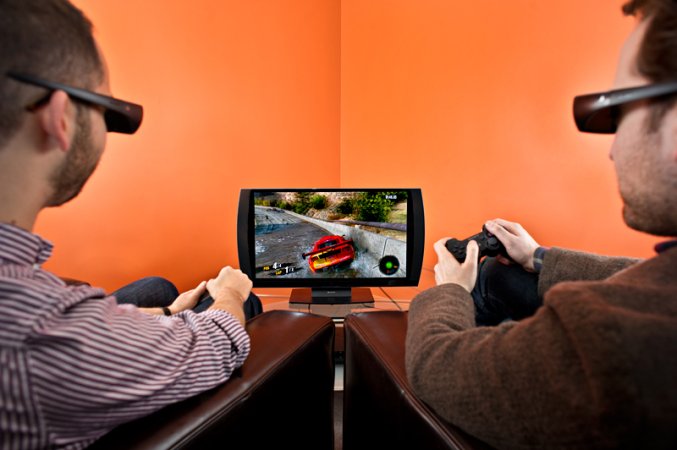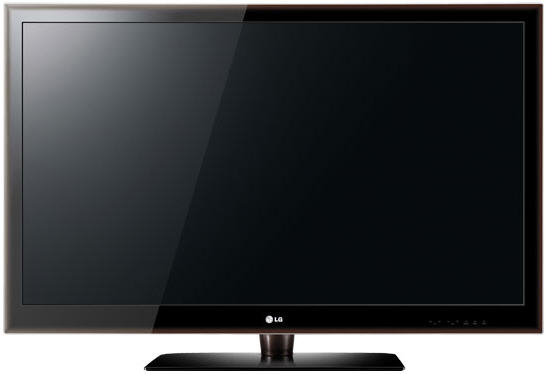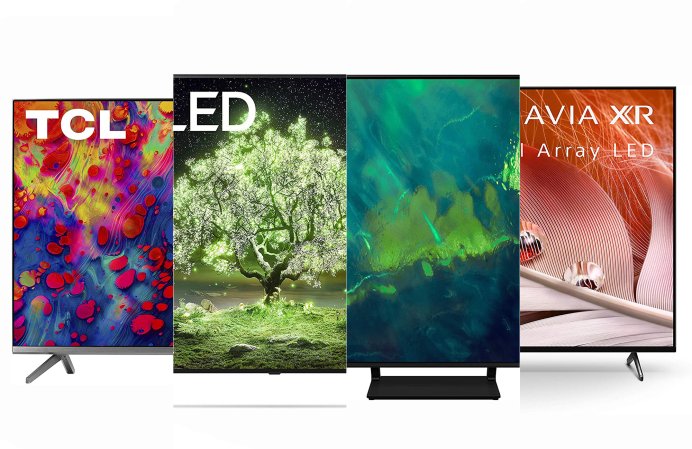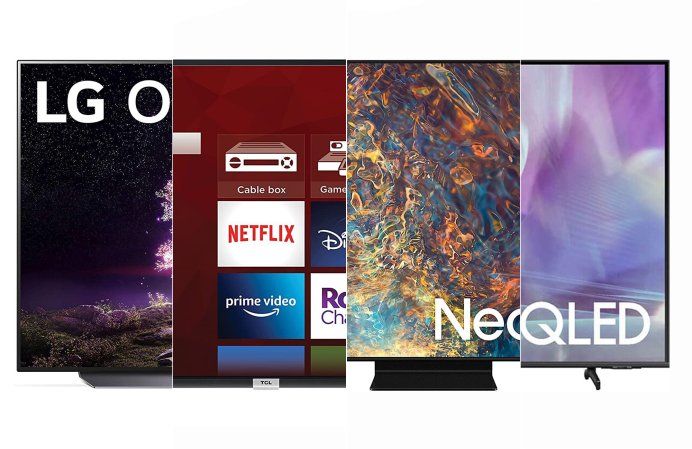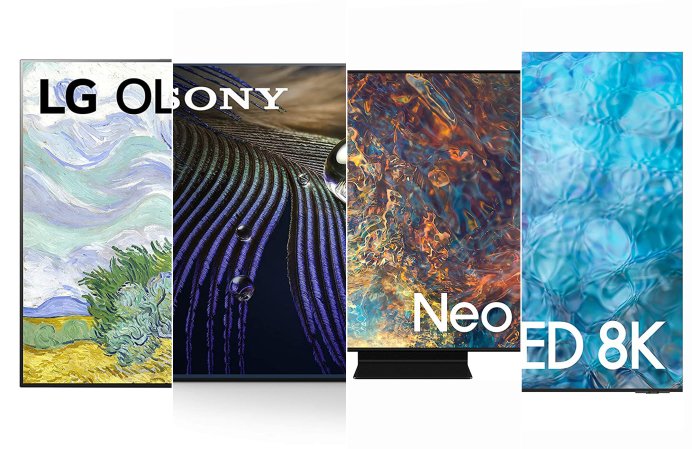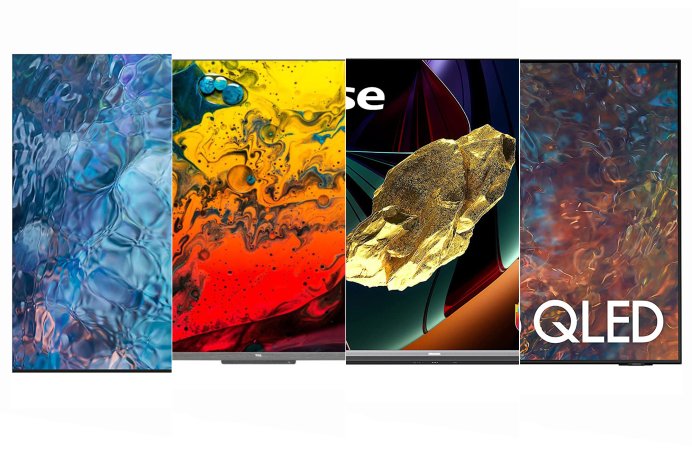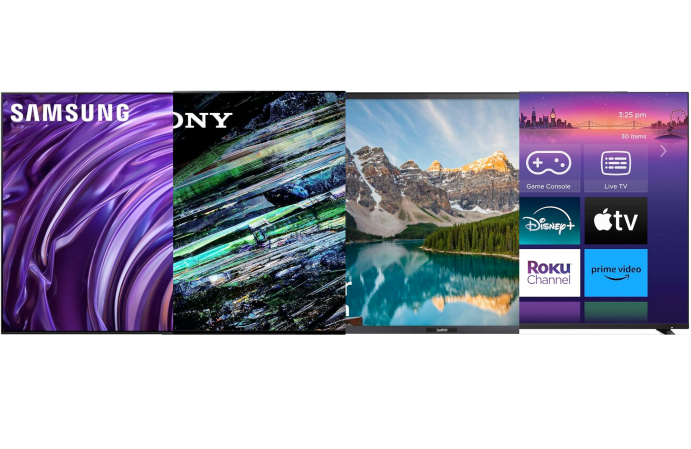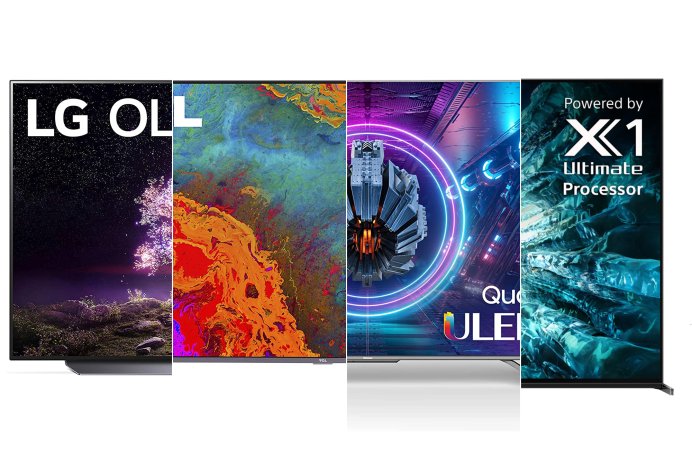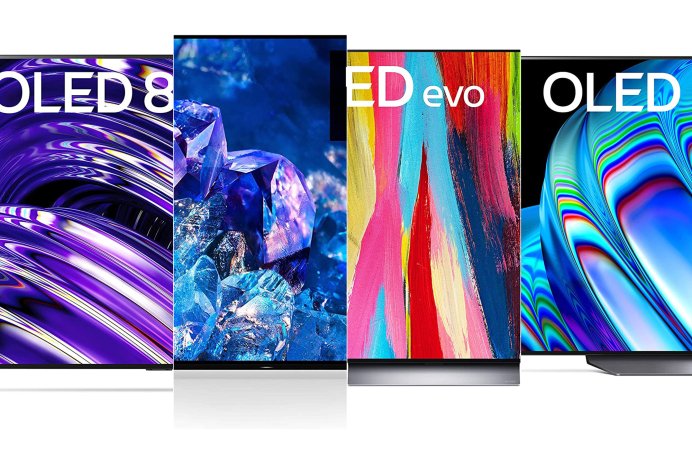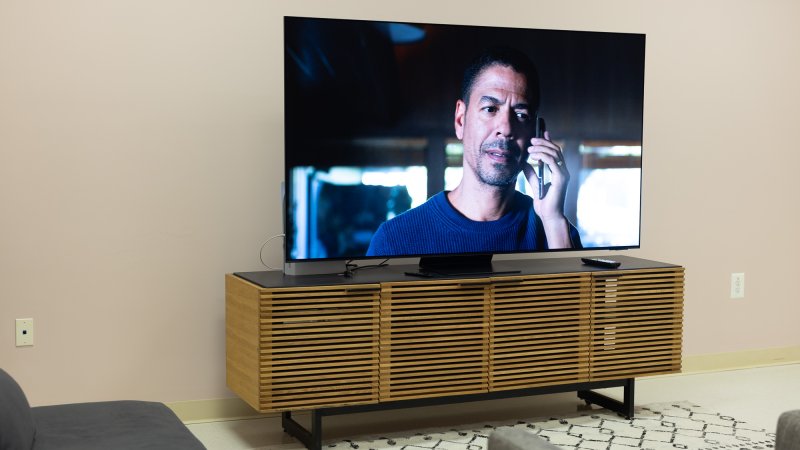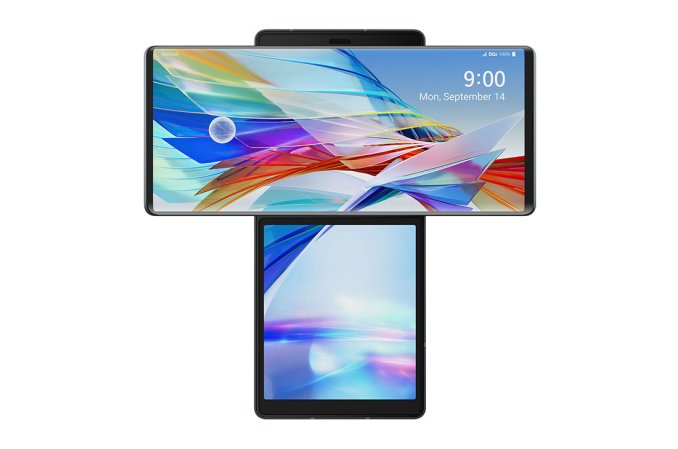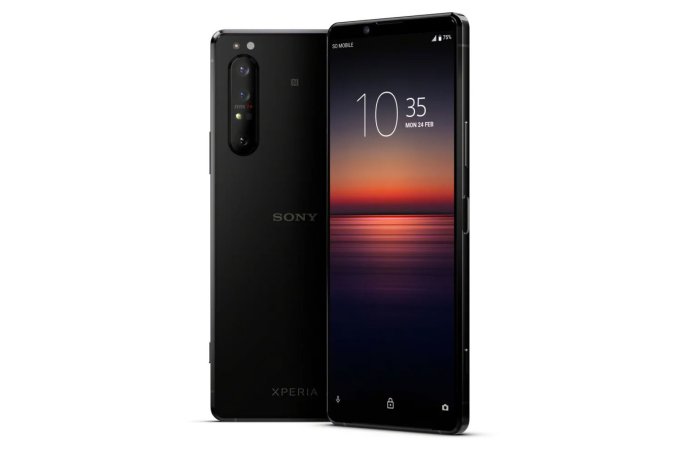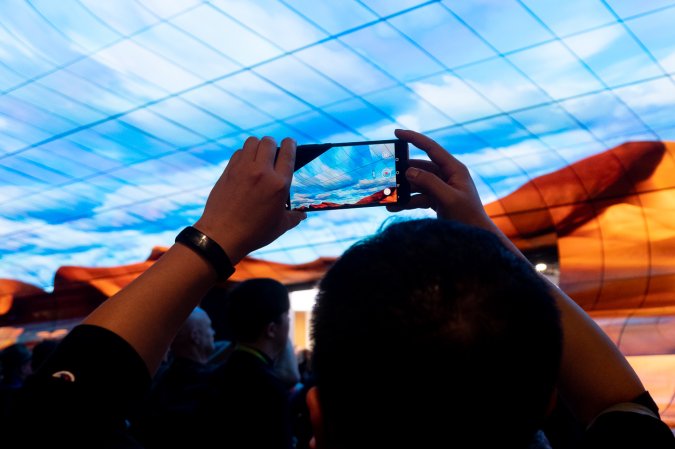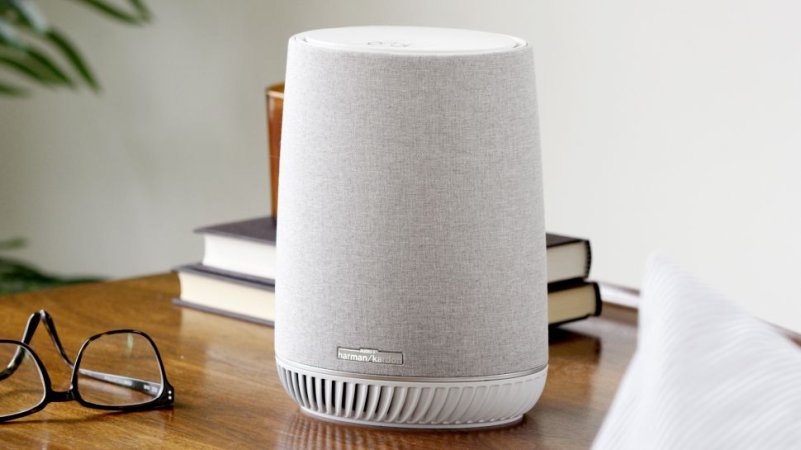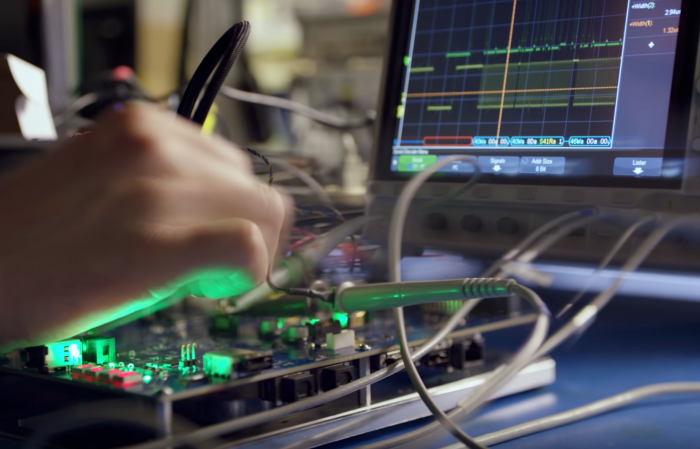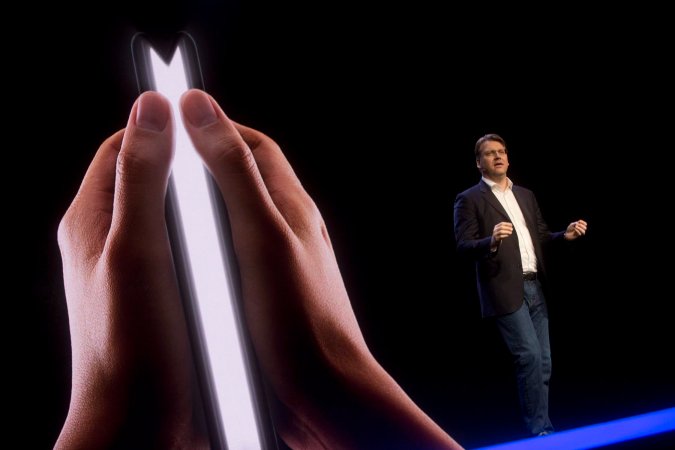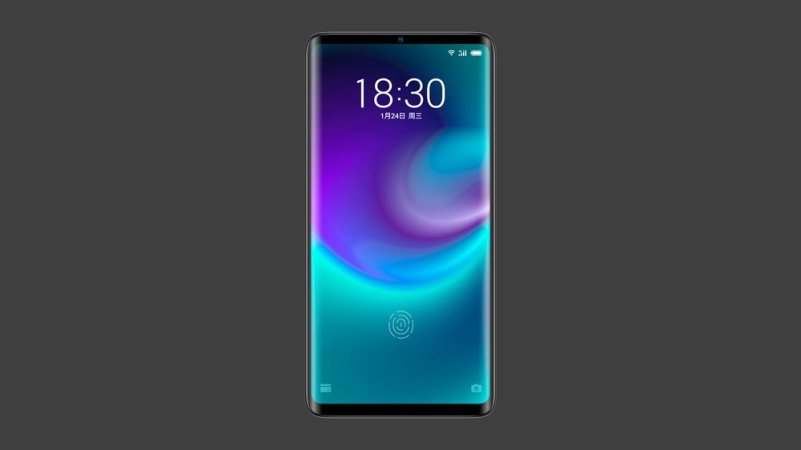

We may earn revenue from the products available on this page and participate in affiliate programs. Learn more ›
Few things embody the annual Consumer Electronics Show like a heap of giant new TVs. Every year, manufacturers line their booths with acres of displays to show off their latest, greatest, and flashiest new televisions and the tech that makes them work. Even if you don’t get to walk through the display-laden halls, you can still appreciate all the new screens that will be hitting the market this year and beyond.
Samsung
Samsung typically leads off the show with its high-end offerings and 2022 is no different.
Samsung Micro LED TVs
Samsung Micro LED
Micro LED has been around for a few years in various forms, but last year it started showing up in more ultra-high-end consumer TVs designed to take on OLED. Samsung’s Micro LED displays rely on a 25-million LED array, with each. diode measuring just micrometers across. All those tiny sources of illumination allow the screen to achieve impressive contrast by keeping dark areas dim even if they appear right next to bright objects. It’s the same basic idea that makes OLED so attractive.
Samsung’s Micro LED offerings will come in 89-inch, 101-inch, and 110-inch models, all of which will be able to reproduce 100 percent of the DCI and Adobe RGB color spaces. They also promise 1 million-to-one contrast ratios, but that metric is tricky when translating into real-world performance because it doesn’t consider factors like max brightness.
In addition to the picture upgrades, Samsung has added top, side, and bottom speakers in order to make the Micro LED TVs compatible with Dolby Atmos surround. If you’re spending this much on a TV, you’re probably also going to ball out on speakers to go with it, but I like this addition anyway.
Samsung Neo QLED
Samsung Neo QLED
Moving slightly down the chain, Samsung has updated the Neo QLED tech that it introduced at last year’s CES. As the name suggests, the mini LEDs inside these panels aren’t quite as small as the micro LEDs found in the flagship, but Samsung has added some smart tech to maximize picture quality. The new processor inside enables advanced contrast mapping, which stops bright areas from bleeding into shadows. As a result, the TV can tweak its brightness level across 16,384 individual steps, compared to roughly a quarter of that number in last year’s already excellent panels.
Samsung’s AI ambitions are still very clearly apparent in the new Neo QLED displays. The TV actively analyzes on-screen objects to optimize lighting and depth in order to make the image pop. The previous generation of Neo QLED was already excellent, so I’m looking forward to seeing these in-person.
Samsung Frame TV
Samsung Frame TV
The familiar fine art TV gets a new anti-glare, low reflection. screen that will do better justice to content as well as the digital art they display between binge watching. The Frame offerings will range between 32 and 85 inches, all of which will get the embossed Matt Display to increase visibility across a variety of ambient illumination.
Samsung Sero TV
Remember Samsung’s Tik Tok TV from a few CES shows ago? It can automatically rotate into a vertical orientation when you’re watching content meant for a smartphone. A new native Multi View function allows users to watch content on part of the screen while browsing the web or doing other things on the other segment. I still think we’re going to see more TVs that aren’t outright hostile for vertical content down the road.
Samsung Eco Remote
Samsung Eco Remote 2022
Last year, Samsung announced its Eco Remote, which added a solar panel on the back to basically eliminate the need for disposable batteries. This year, Samsung upgraded that charging panel, allowing it to pull power from radio waves emitted from a wireless router. I’m curious to see how efficiently the remote can convert RF into power, but it’s great to see Samsung continue to iterate on the Eco Remote concept.
Sony
2022 is a year of firsts for Sony, some of which are firsts for the industry as a whole.
Sony A95K QD-OLED

QD-OLED mashes together two of the most popular high-end TV techs. Sony claims it offers the best of both worlds, including the deep blacks and ample contrast from OLEDs and the brighter, more colorful picture associated with quantum dot displays.
OLED screens typically rely on pure white sub pixels to improve brightness, but that can sometimes wash out the colors. Quantum dots eschew that problem completely, which improves efficiency as well as color performance.
Of course, this is a flagship display and it’s going to cost a huge amount of money. Sony’s high-end OLED TVs still command a high price tag, so this will be “I recently found a bunch of bitcoins in an old wallet” level lavish. It will definitely look beautiful, though. Despite its swankiness, it will only ship in 55- and 65-inch sizes due to technology limits.
Sony A90K and A80K OLED TVs
While QD-OLED steals the scene a bit when it comes to cool new tech, Sony isn’t abandoning its tried-and-true OLED offerings. The A90K will ship in 42- and 48-inch versions, while the more affordable A80K will ship in 55-, 65-, and 77-inch configurations. There isn’t a ton of new tech going on with Sony’s new OLED screens, but they will support variable refresh rate and HDMI 2.1 (with 4K at 120 fps support) right out of the box. That should be a big draw for people looking to buy a new TV that takes full advantage of a new Xbox Series X or Sony PS5 gaming console.
LG
If you currently have (or crave) an OLED TV, there’s a good chance it has an LG panel, so it’s no surprise that the company is still betting big on OLED tech for its 2022 TVs.
LG G2 97-inch OLED TV
LG 97-inch OLED
There was a time when the “world’s biggest TV” made big headlines at CES almost every year. The hype has died down in that regard, but it still makes for a fun headline. This year, LG has introduced a 97-inch model to its G2 series OLED TVs. It previously capped out at a very respectable 88 inches. Of course, that was an 8K display and the new 97-inch model will only do 4K. That said, the 88-inch TV costs roughly $30,000, so it’s a safe bet that the 97-inch version will go well beyond that.
You will get a lot for your money, though. In addition to the pure size upgrade, LG equipped its flagship TV with variable refresh rate and 4K 120 fps compatibility, so it will make use of all the firepower found in current-gen gaming consoles. LG also promises a roughly 20 percent brightness improvement over the previous generation OLED panels.
LG C2 OLED TVs
Stepping down just a tick from the flagship models, the C2 won’t be available in the massive 97-inch size, and it won’t get the brightness upgrade from the previous version. But, you will get all the rest of the features, as well as a smaller 42-inch model, which wasn’t previously available.
TCL
While many people know TCL for its cheap, Roku-powered, Black Friday fodder TVs, the company also makes some impressive displays with interesting technology inside.
TCL XL collection 98-inch QLED TV
TCL XL series TV
As the name suggests, TCL’s new flagship puts the emphasis on its overall size. At 98 inches, it’s the biggest TV the company has ever offered. It’s a 4K display, but it supports 144 Khz variable refresh rate and relies on quantum dot tech for ample brightness and vivid color. It has 192 individual dimming zones, so the backlight can efficiently distribute light where it’s meant to go without it leaking into the shadows and turning them boring gray. It’s not the most groundbreaking TV around, but it’s big and sometimes that’s good enough.
TCL X925pro 85-inch 8K TV
TCL has been ahead of the pack when it comes to mini LED tech and it has continued its refinements this year. This 85-inch 8K TV measures just 10mm thick, which is considerably skinnier than even OLED displays. Despite the lack of chunkiness, it still offers 8K resolution and the rest of TCL’s familiar bells and whistles, which have made it the number two most popular TV brand in the world.
Hisense
A wide range of new TVs offer standard upgrades at just about every imaginable price point.
Hisense U9H and U8H
This company has a reputation for making absurdly bright TVs with solid features for reasonable prices and these Mini LED models live up to it. The 75-inch U9H promises 2,000 nits of peak brightness, which should be plenty, even in a relatively bright room. It relies on 1,280 local dimming zones from its backlight to provide a poppy, contrasty picture all for $3,199 retail.
The U8H and U7H go down to 55 inches and offer many of the same features at similarly affordable prices.
Continuing coverage
We’ll be adding more new TV tech as its announced at CES 2022, so check back for fancy new displays.







